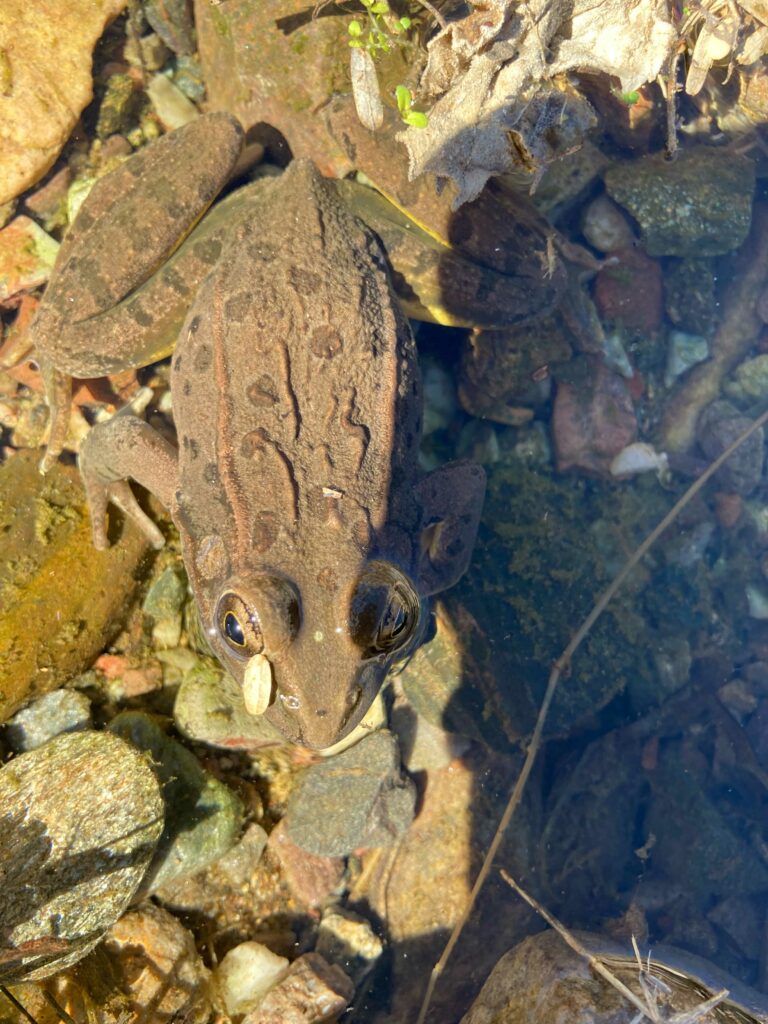
Written by Sage Bradford, Wild Stew Field Crew Member.
“At one point I looked down at my beard and realized it was full of cockleburs” said Nico.
“Cocklebeard would be an incredible pirate name,” Kile responds. I laugh in agreement, imagining a pirate spreading terror near and far with their noxious weeds.

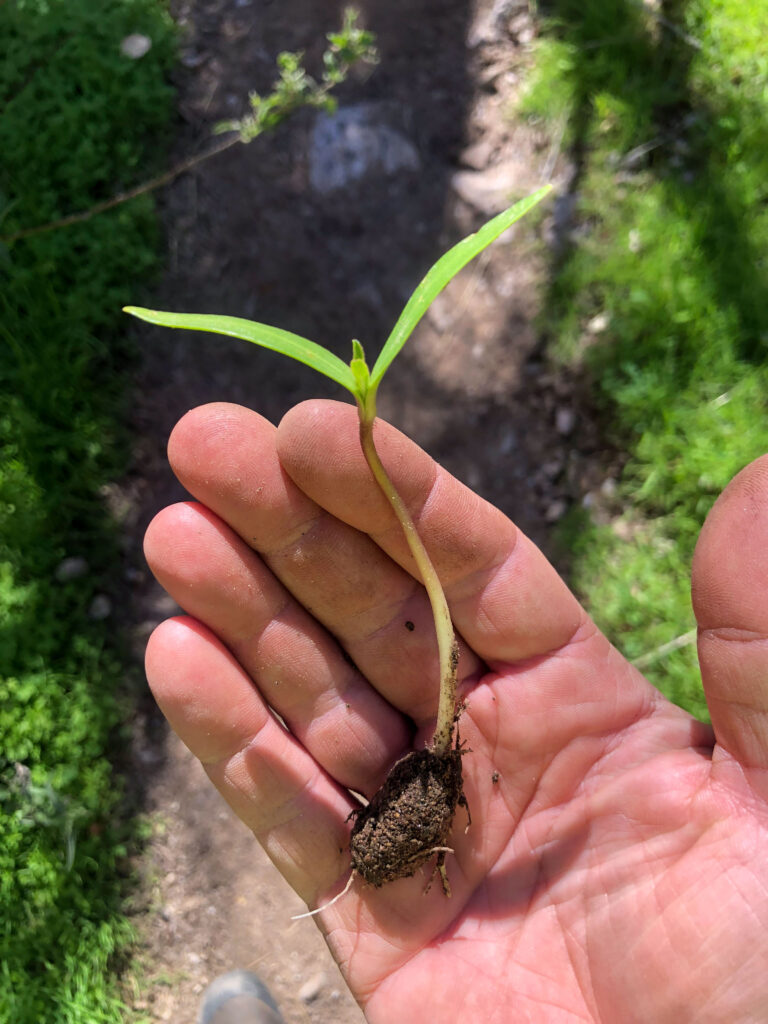
Half the crew is back in Arnett Creek this hitch. Wild Arizona has been doing habitat restoration in the beautiful Arnett for years. I myself was last in Arnett circa December 2023. As we rolled into Arnett on a sunny Wednesday afternoon in February, I couldn’t help being struck by how different this place felt compared to December. The ground was much greener; grass and sprouts covering the Earth. The creek, which was a dried riverbed in December, was now flowing considerably. The hike to our worksites became longer than in December, having to account for time to rock hop and dodge mud. The sun was setting an hour later. The days are warmer. Some flowers, such as the Henbit Deadnettle and Southwestern Mock Vervain, were already blooming. The promise of spring hung heavy in the air.
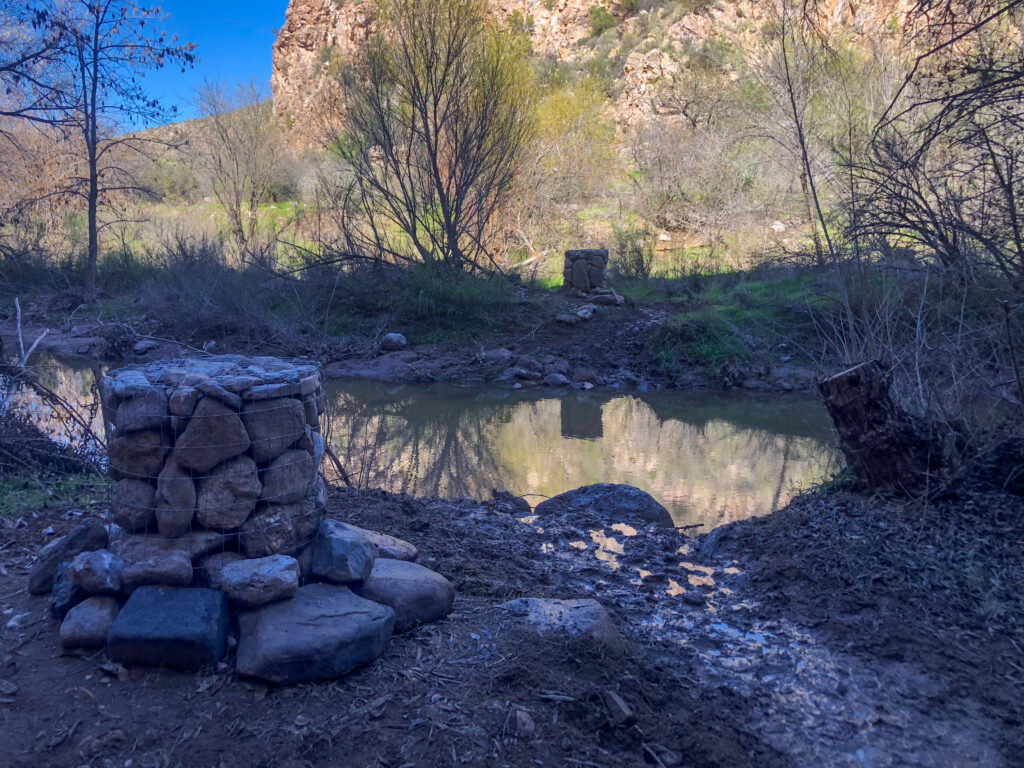
While the seasons in Arnett may have been changing, our work remained much the same. We were there to remove invasives and noxious weeds. Wednesday, Thursday and Friday were spent walking along Arnett Creek, looking for cocklebur. When we found the annual weed, we would pick the prickly burs, placing them in heavy duty garbage bags.
By the end of Friday, our garbage bags were heavy with burs. We had successfully scouted and removed cockleburs along the remaining 2.9 miles of Arnett Creek. Thus, on Saturday we turned our focus to a different annual plant: Malta Star Thistle. Like cocklebur, Malta Star Thistle is highly competitive and often develops dense stands that prevent native vegetation from growing. This time of year Malta Star Thistle appears as rosettes. Luckily, this means they have not yet developed their painful spines and are easy to remove by hand. We slowly scoured Arnett Creek, eyes pointed at the ground, trowels at the ready.

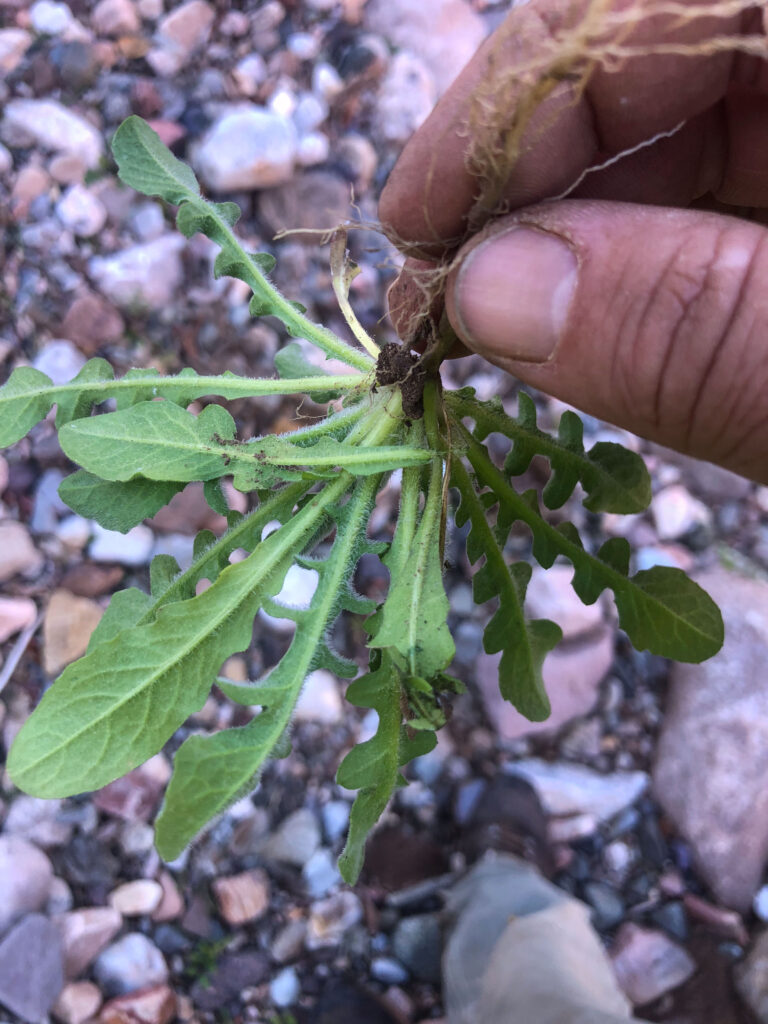
On Sunday, we turned our attention away from Arnett and to Telegraph. When I was last here in December, we removed dozens of garbage bags brimming with cockleburs from Telegraph. Yet despite our efforts, some cockleburs went unnoticed in December. Now February, these sneaky burs had begun to re-sprout. Thus, we re-traced our steps from December, finding new cocklebur to bag. We received some respite from cocklebur picking on Sunday in the form of felling, limbing and bucking a non-native Chinese Pistache. After low stumping the tree, the crew treated the cambium layer of it with herbicide. We also re-treated a patch of Tree of Heaven with herbicide.

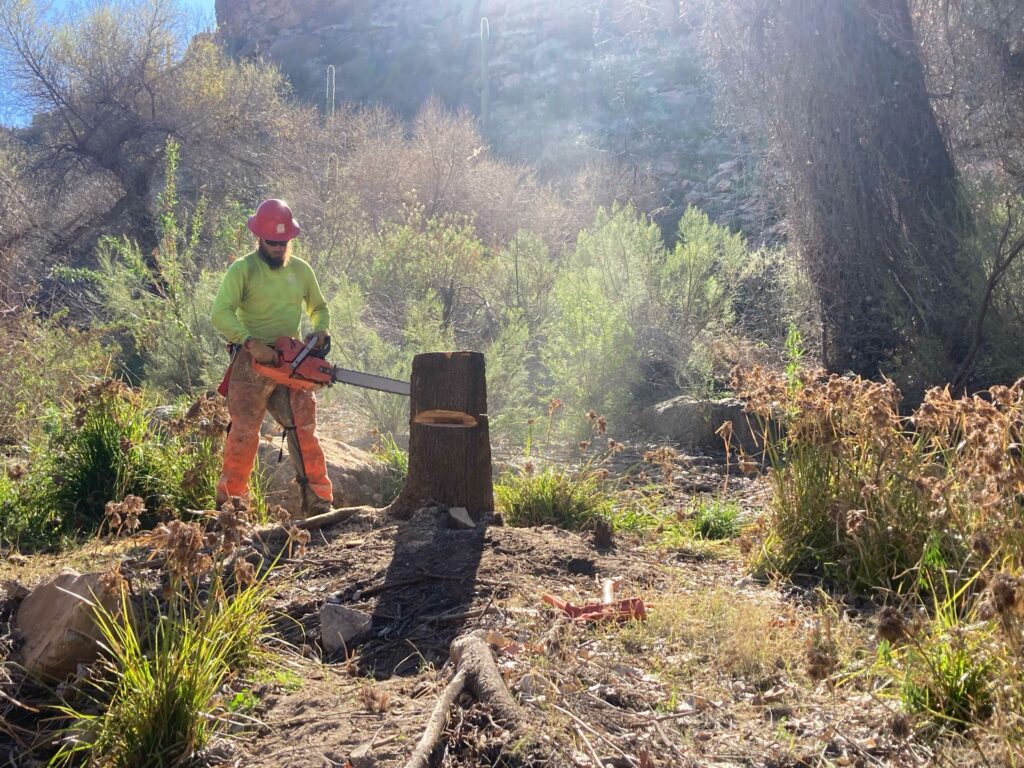
Monday and Tuesday we continued to work in Telegraph. More cockleburs were picked and Malta Star Thistle dug up. Additionally, a few remaining Oleander, Tree of Heaven and African Sumac were treated with herbicide. By Tuesday night I was tired of looking at invasives, but happy to know we had scoured the entirety of both Arnett Creek and Telegraph.
We wrapped up our hitch Wednesday morning with a visit to the City of Superior dump. There, we dumped our garbage bags of cocklebur into the incinerator. I for one was glad to watch the burs go up into flame. It was not just the heat of the incinerator warming me, but the knowledge that those sticky burs wouldn’t get on anymore hikers, dogs or horses. Best of all, our efforts were giving native plants a fighting chance.

